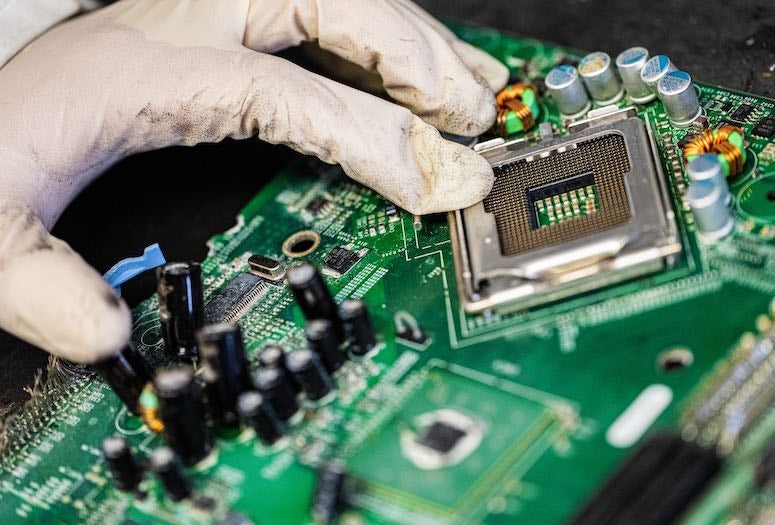HOUSTON – (Oct. 4, 2021) – In what should be a win-win-win for the environment, a process developed at Rice University to extract valuable metals from electronic waste would also use up to 500 times less energy than current lab methods and produce a byproduct clean enough for agricultural land.
The flash Joule heating method introduced last year to produce graphene from carbon sources like waste food and plastic has been adapted to recover rhodium, palladium, gold and silver for reuse.
A report in Nature Communications by the Rice lab of chemist James Tour also shows highly toxic heavy metals including chromium, arsenic, cadmium, mercury and lead are removed from the flashed materials, leaving a byproduct with minimal metal content.
Instantly heating the waste to 3,400 Kelvin (5,660 degrees Fahrenheit) with a jolt of electricity vaporizes the precious metals, and the gases are vented away for separation, storage or disposal. Tour said that with more than 40 million tons of e-waste produced globally every year, there is plenty of potential for “urban mining.”
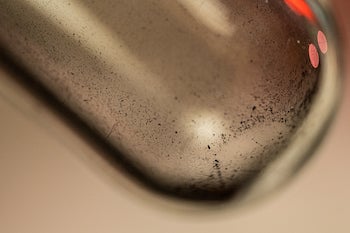
“Here, the largest growing source of waste becomes a treasure,” Tour said. “This will curtail the need to go all over the world to mine from ores in remote and dangerous places, stripping the Earth’s surface and using gobs of water resources. The treasure is in our dumpsters.”
He noted an increasingly rapid turnover of personal devices like cell phones has driven the worldwide rise of electronic waste, with only about 20% of landfill waste currently being recycled.
“We found a way to get the precious metals back and turn e-waste into a sustainable resource,” he said. “The toxic metals can be removed to spare the environment.”
The lab found flashing e-waste requires some preparation. Guided by lead author and Rice postdoctoral research associate Bing Deng, the researchers powdered circuit boards they used to test the process and added halides, like Teflon or table salt, and a dash of carbon black to improve the recovery yield.
Once flashed, the process relies on “evaporative separation” of the metal vapors. The vapors are transported from the flash chamber under vacuum to another vessel, a cold trap, where they condense into their constituent metals. “The reclaimed metal mixtures in the trap can be further purified to individual metals by well-established refining methods,” Deng said.
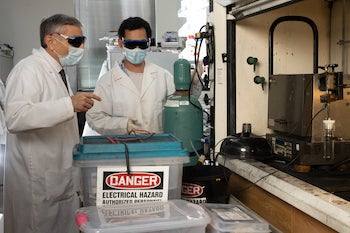
The researchers reported that one flash Joule reaction reduced the concentration of lead in the remaining char to below 0.05 parts per million, the level deemed safe for agricultural soils. Levels of arsenic, mercury and chromium were all further reduced by increasing the number of flashes.
“Since each flash takes less than a second, this is easy to do,” Tour said.
The scalable Rice process consumes about 939 kilowatt-hours per ton of material processed, 80 times less energy than commercial smelting furnaces and 500 times less than laboratory tube furnaces, according to the researchers. It also eliminates the lengthy purification required by smelting and leaching processes.
Co-authors of the paper are Rice alumnus Duy Xuan Luong, graduate students Zhe Wang and Emily McHugh and research scientist Carter Kittrell. Tour is the T.T. and W.F. Chao Chair in Chemistry as well as a professor of computer science and of materials science and nanoengineering. The Air Force Office of Scientific Research (FA9550-19-1-0296) and the Department of Energy (DE-FE0031794) supported the research.
-30-
Read the paper at https://www.nature.com/articles/s41467-021-26038-9.
This news release can be found online at https://news-network.rice.edu/news/2021/10/04/urban-mining-for-metals-flashes-forward/.
Follow Rice News and Media Relations via Twitter @RiceUNews.
Related materials:
Rice lab turns trash into valuable graphene in a flash: http://news.rice.edu/2020/01/27/rice-lab-turns-trash-into-valuable-graphene-in-a-flash-2/
Flash graphene rocks strategy for plastic waste: http://news.rice.edu/2020/10/29/flash-graphene-rocks-strategy-for-plastic-waste-2/
Tour Group: https://www.jmtour.com
Department of Chemistry: https://chemistry.rice.edu
Wiess School of Natural Sciences: https://naturalsciences.rice.edu
Video:
Video produced by Brandon Martin/Rice University
Images for download:
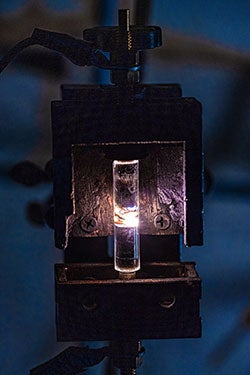
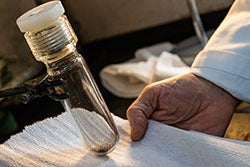


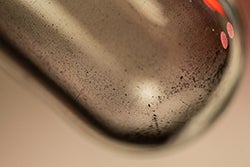
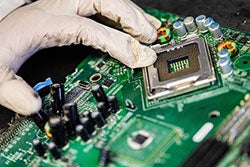
Located on a 300-acre forested campus in Houston, Rice University is consistently ranked among the nation’s top 20 universities by U.S. News & World Report. Rice has highly respected schools of Architecture, Business, Continuing Studies, Engineering, Humanities, Music, Natural Sciences and Social Sciences and is home to the Baker Institute for Public Policy. With 4,052 undergraduates and 3,484 graduate students, Rice’s undergraduate student-to-faculty ratio is just under 6-to-1. Its residential college system builds close-knit communities and lifelong friendships, just one reason why Rice is ranked No. 1 for lots of race/class interaction and No. 1 for quality of life by the Princeton Review. Rice is also rated as a best value among private universities by Kiplinger’s Personal Finance.

